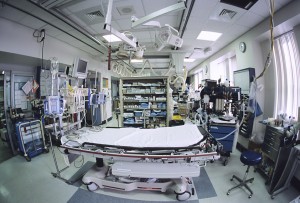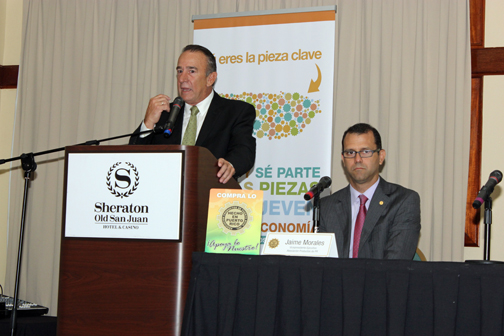Hospitals ponder uniform fees to draw medical tourism


Medical tourism is back on the radar after many years of talk about its potential benefits and the island’s assets: lower medical costs, excellent doctors, and superior healthcare facilities run under stringent federal regulations.
The Puerto Rico Hospitals Association is evaluating the idea of attracting medical tourists to the island by offering uniform rates for medical procedures.
In this scenario, hospitals would compete for patients based on the quality of medical care and performance as reflected by such indicators as the success rate of procedures and the level of hospital-acquired infections, said Domingo Cruz, chairman of the association’s board of directors.
“The idea, in principle, is for medical tourism to be a country project rather than hospitals competing against each other. Patients will decide where to go based on indicators that would be made public,” Cruz said in an interview during which he noted that uniform fees are “under evaluation” by the association.
Medical tourism is back on the radar after many years of talk about its potential benefits and the island’s assets: lower medical costs, excellent doctors, and superior healthcare facilities run under stringent federal regulations.
But while patients from the Caribbean and even Latin America have been coming to Puerto Rico for decades to obtain medical services not available in their own countries, the island has yet to launch a full-scale program to tap into the $100 billion — and growing — medical tourism world market.
Even a small slice of the pie could have a big impact on the local economy. Attracting only 3 percent of the 1.6 million Americans who travel to other areas of the world to seek lower priced medical services could represent a $500 million a year bonanza for Puerto Rico, according to government and hospital officials.
The Hospitals Association has not only been discussing how best to compete for medical tourists but is taking active steps toward developing this market. For example:
- it has begun a medical tourism certification process for hospitals to attest compliance with a list of requirements: Joint Commission accreditation, bilingual staffs and signage, concierge service, and agreements with hotels for reduced rates benefitting medical tourists;
- it is enlisting hotels to give client-service tutorials to hospitals;
- it is in the process of enlisting a stateside company to provide simultaneous translation services to local hospitals;
- and, early in 2014 it will launch a bilingual medical tourism magazine that will publish four times a year.
But the private sector can’t do it alone. Cruz said that for the island to develop a medical tourism industry it is essential for the government and the private sector to work together. In all the countries where this industry has been developed, such as India, Costa Rica and Mexico, “it has been done with the support of the government,” he said.
And from all indications, the government appears ready to lend that support. The Alejandro García-Padilla administration recently hired a company to do a study that will provide a broad picture of the island’s medical sector and how it fits in within the larger tourism industry. The study will be ready early next year and is expected to lead to a public policy.
Meanwhile, the Hospitals Association is lobbying for more practical help. Specifically, it wants the government to contribute between $5 million to $8 million to be used over a three-year period to promote and market the island at medical conventions and meetings held on the mainland.
The money would also pay for a call center and a website providing medical tourists with information on all the healthcare services available in Puerto Rico.
This seed money would be a one-time only investment with the private sector subsequently picking up the cost of promoting the island as a medical tourism destination. One idea is for hospitals to contribute a percentage of their income to help fund the continuity of promotional efforts, Cruz said.







In general, an interesting plan, but the specifics are wobbly. For example, an agreement between competing hospitals to establish uniform fees is a horizontal agreement not to compete on price. They’re going to face major problems under both Sherman 1 and Act 77. Better to focus on the other aspects of the plan.
First of all, Price Fixing is dangerous policy; it always raises both legal and moral issues. Other than that, one of the major reasons medical tourism has really never taken off is because of the lack of marketing and advertising it has received over the years. Few have been willing to risk $, to then see visitors land on the island, and go to a different doctor or facility. Having uniform fees won’t solve that. It is very anti-competitive…a habit, practice, and part of the local culture the island needs to consciously step away from.